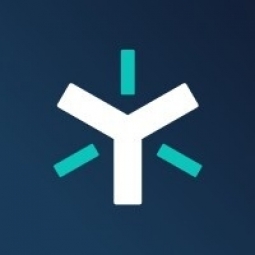Technology Category
- Application Infrastructure & Middleware - Database Management & Storage
- Infrastructure as a Service (IaaS) - Public Cloud
Applicable Industries
- Pharmaceuticals
Applicable Functions
- Quality Assurance
Use Cases
- Onsite Human Safety Management
- Root Cause Analysis & Diagnosis
Services
- System Integration
- Testing & Certification
About The Customer
Nimbus Therapeutics is a biotechnology company based in Cambridge, Massachusetts, USA. The company is involved in running multiple experiments and projects simultaneously, generating a large volume of data. The company was heavily reliant on manual processes for data management, which was proving to be inefficient and prone to errors. The company has 77 employees and uses Egnyte's Platform Enterprise for data storage. The company's data management processes involve external vendors and stakeholders dispersed across different time zones.
The Challenge
Nimbus Therapeutics, a biotech company, was grappling with the challenge of managing increasing volumes of data from multiple experiments and projects. The company's reliance on manual data management processes was proving unsustainable. The team had to validate the data, upload it into the corporate database, reconcile different data formats, and troubleshoot any issues. Human error at any of these steps threatened data integrity. Inefficiency was another challenge as the team had to create a new file or manually update and rename an existing one each time a document was modified. Lack of visibility and accountability was a problem as file update notifications were sent through email, which could easily get lost in crowded inboxes. Stakeholders were dispersed across time zones, which often slowed the process. Content sat for hours or days before the data team started their workday.
The Solution
Nimbus Therapeutics decided to automate the transfer and management of data. The company was already using Egnyte for data storage. Dr. Carazza, who joined the company in 2018, saw an opportunity to use Egnyte’s built-in public cloud workflows and integrations to automate how content sent from vendor partners was handled. A tech stack was assembled, consisting of Jira™, AWS Lambda, and other platforms, to create an end-to-end solution that would automate how the data was received, validated, uploaded, and updated. Egnyte acted as the hub for the data team to synthesize these tools into a cohesive, interconnected workflow, referred to as NIMBEye. Egnyte facilitated the interconnected use of Lambda (AWS’ event-driven compute service) and Jira’s workflow and ticketing system to accelerate the process of finding new content and getting it into the database. The team now uses several key features in Egnyte, including version control, secure links, issue alerts, and metadata capture.
Operational Impact
Quantitative Benefit

Case Study missing?
Start adding your own!
Register with your work email and create a new case study profile for your business.
Related Case Studies.

Case Study
Case Study: Pfizer
Pfizer’s high-performance computing software and systems for worldwide research and development support large-scale data analysis, research projects, clinical analytics, and modeling. Pfizer’s computing services are used across the spectrum of research and development efforts, from the deep biological understanding of disease to the design of safe, efficacious therapeutic agents.

Case Study
Fusion Middleware Integration on Cloud for Pharma Major
Customer wanted a real-time, seamless, cloud based integration between the existing on premise and cloud based application using SOA technology on Oracle Fusion Middleware Platform, a Contingent Worker Solution to collect, track, manage and report information for on-boarding, maintenance and off-boarding of contingent workers using a streamlined and Integrated business process, and streamlining of integration to the back-end systems and multiple SaaS applications.

Case Study
Process Control System Support
In many automated production facilities, changes are made to SIMATIC PCS 7 projects on a daily basis, with individual processes often optimised by multiple workers due to shift changes. Documentation is key here, as this keeps workers informed about why a change was made. Furthermore, SIMATIC PCS 7 installations are generally used in locations where documentation is required for audits and certification. The ability to track changes between two software projects is not only an invaluable aid during shift changes, but also when searching for errors or optimising a PCS 7 installation. Every change made to the system is labour-intensive and time-consuming. Moreover, there is also the risk that errors may occur. If a change is saved in the project, then the old version is lost unless a backup copy was created in advance. If no backup was created, it will no longer be possible to return to the previous state if and when programming errors occur. Each backup denotes a version used by the SIMATIC PCS 7 system to operate an installation. To correctly interpret a version, information is required on WHO changed WHAT, WHERE, WHEN and WHY: - Who created the version/who is responsible for the version? - Who released the version? - What was changed in the version i.e. in which block or module of the SIMATIC PCS 7 installation were the changes made? - When was the version created? Is this the latest version or is there a more recent version? - Why were the changes made to the version? If they are part of a regular maintenance cycle, then is the aim to fix an error or to improve production processes? - Is this particular version also the version currently being used in production? The fact that SIMATIC PCS 7 projects use extremely large quantities of data complicates the situation even further, and it can take a long time to load and save information as a result. Without a sustainable strategy for operating a SIMATIC PCS 7 installation, searching for the right software version can become extremely time-consuming and the installation may run inefficiently as a result.

Case Study
ELI LILLY ADOPTS MICROMEDIA’S ALERT NOTIFICATION SYSTEM
Pharmaceutical production is subject to a strict set of enforced rules that must be adhered to and compliance to these standards is critically necessary. Due to the efforts of WIN 911’s strategic partner Micromedia, Lilly was able to adopt an alarm notification infrastructure that integrated smoothly with their existing workflows and emergency hardware and protocols. These raw energy sources enable the industrial process to function: electricity, WIN-911 Software | 4020 South Industrial Drive, Suite 120 | Austin, TX 78744 USA industrial steam, iced water, air mixtures of varying quality. Refrigeration towers, boilers and wastewater are monitored by ALERT. Eli Lilly identified 15000 potential variables, but limitations compelled them to chisel the variable list down to 300. This allowed all major alarms to be covered including pressure, discharge, quantity of waste water discharged,temperature, carbon dioxide content, oxygen & sulphur content, and the water’s pH.









